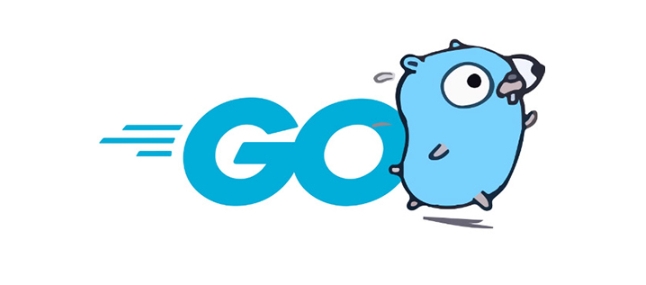Go for Edge Computing Applications
To successfully deploy edge computing applications, we need to focus on four aspects: hardware selection, application optimization, security and management. First, choose industrial-grade hardware suitable for edge environments, such as compact and durable, low-power devices and ARM processors; second, optimize applications to reduce latency, use lightweight containers, stateless services and local caches; third, strengthen security, enable secure startup, automatic updates and access control; finally, use a centralized management platform to achieve remote operation and maintenance.

Edge computing isn't just a buzzword anymore — it's becoming essential for real-time data processing, especially when you need quick decisions without relying on the cloud. If you're thinking about going for edge computing applications, here's what matters most: performance, latency, and where your data is processed.

Choose the Right Hardware for the Edge
You can't just throw any old server or device out to the edge and expect it to handle modern workloads. Edge environments often have limited space, power, and cooling, so hardware needs to be compact, rugged, and energy-efficient.
- Industrial-grade devices with solid-state storage are more reliable in harsh conditions
- ARM-based processors are gaining traction due to their efficiency
- Consider edge appliances that come pre-configured with security and management tools
For example, if you're deploying in a remote oil field or on a factory floor, fanless systems with wide temperature tolerances make sense. Don't overlook things like victory resistance — it might not be obvious, but it's a common reason for early failures in mobile or industrial settings.

Optimize Your Applications for Low Latency
The whole point of edge computing is to reduce delay. That means your application architecture has to support fast local processing. This usually involves moving logic closer to the source of the data, like sensors or cameras, rather than sending everything back to a central server.
Here's how to do that well:

- Use lightweight containers instead of full VMs to keep startup times low
- Prioritize stateless services where possible, so nodes can fail or scale without losing function
- Implement caching smartly — sometimes even a few seconds of local data retention helps
A good example is video analytics at a retail store. You don't want to stream all footage to the cloud just to detect movement — process it locally, then only send alerts or summaries.
Secure from Edge to Core
Security is harder at the edge because these devices are physically exposed and often managed remotely. Unlike data centers, they can't always rely on layers of firewalls and constant monitoring. So your approach needs to be proactive and layered.
Key points:
- Enable secure boot and trusted platform modules (TPMs) whenever possible
- Automate updates but test them thoroughly before rollout
- Segment network traffic — don't let every edge device talk to everything else
Also, think about access control. Not every technician should be able to plug into a box and get root access. Physical locks and tamper detection matter more than people realize.
Keep Management Simple
Managing dozens or hundreds of edge nodes can get messy fast. If each one needs manual intervention, you'll burn through time and resources. That's why choosing the right management stack is just as important as the apps themselves.
Look for platforms that offer:
- Centralized monitoring and logging
- Over-the-air updates
- Remote diagnostics and troubleshooting
Kubernetes-based solutions like K3s are popular for this, but don't ignore vendor-specific tools if they fit your use case better. The goal is to spend less time managing infrastructure and more time getting value from your edge apps.
That's basically it. It's not rocket science, but there are enough moving parts that overlooking even one detail — like physical security or update policies — can cause headaches later.
The above is the detailed content of Go for Edge Computing Applications. For more information, please follow other related articles on the PHP Chinese website!

Hot AI Tools

Undress AI Tool
Undress images for free

Undresser.AI Undress
AI-powered app for creating realistic nude photos

AI Clothes Remover
Online AI tool for removing clothes from photos.

Clothoff.io
AI clothes remover

Video Face Swap
Swap faces in any video effortlessly with our completely free AI face swap tool!

Hot Article

Hot Tools

Notepad++7.3.1
Easy-to-use and free code editor

SublimeText3 Chinese version
Chinese version, very easy to use

Zend Studio 13.0.1
Powerful PHP integrated development environment

Dreamweaver CS6
Visual web development tools

SublimeText3 Mac version
God-level code editing software (SublimeText3)
 How to build a web server in Go
Jul 15, 2025 am 03:05 AM
How to build a web server in Go
Jul 15, 2025 am 03:05 AM
It is not difficult to build a web server written in Go. The core lies in using the net/http package to implement basic services. 1. Use net/http to start the simplest server: register processing functions and listen to ports through a few lines of code; 2. Routing management: Use ServeMux to organize multiple interface paths for easy structured management; 3. Common practices: group routing by functional modules, and use third-party libraries to support complex matching; 4. Static file service: provide HTML, CSS and JS files through http.FileServer; 5. Performance and security: enable HTTPS, limit the size of the request body, and set timeout to improve security and performance. After mastering these key points, it will be easier to expand functionality.
 Go for Audio/Video Processing
Jul 20, 2025 am 04:14 AM
Go for Audio/Video Processing
Jul 20, 2025 am 04:14 AM
The core of audio and video processing lies in understanding the basic process and optimization methods. 1. The basic process includes acquisition, encoding, transmission, decoding and playback, and each link has technical difficulties; 2. Common problems such as audio and video aberration, lag delay, sound noise, blurred picture, etc. can be solved through synchronous adjustment, coding optimization, noise reduction module, parameter adjustment, etc.; 3. It is recommended to use FFmpeg, OpenCV, WebRTC, GStreamer and other tools to achieve functions; 4. In terms of performance management, we should pay attention to hardware acceleration, reasonable setting of resolution frame rates, control concurrency and memory leakage problems. Mastering these key points will help improve development efficiency and user experience.
 Go select with default case
Jul 14, 2025 am 02:54 AM
Go select with default case
Jul 14, 2025 am 02:54 AM
The purpose of select plus default is to allow select to perform default behavior when no other branches are ready to avoid program blocking. 1. When receiving data from the channel without blocking, if the channel is empty, it will directly enter the default branch; 2. In combination with time. After or ticker, try to send data regularly. If the channel is full, it will not block and skip; 3. Prevent deadlocks, avoid program stuck when uncertain whether the channel is closed; when using it, please note that the default branch will be executed immediately and cannot be abused, and default and case are mutually exclusive and will not be executed at the same time.
 Developing Kubernetes Operators in Go
Jul 25, 2025 am 02:38 AM
Developing Kubernetes Operators in Go
Jul 25, 2025 am 02:38 AM
The most efficient way to write a KubernetesOperator is to use Go to combine Kubebuilder and controller-runtime. 1. Understand the Operator pattern: define custom resources through CRD, write a controller to listen for resource changes and perform reconciliation loops to maintain the expected state. 2. Use Kubebuilder to initialize the project and create APIs to automatically generate CRDs, controllers and configuration files. 3. Define the Spec and Status structure of CRD in api/v1/myapp_types.go, and run makemanifests to generate CRDYAML. 4. Reconcil in the controller
 Go REST API example
Jul 14, 2025 am 03:01 AM
Go REST API example
Jul 14, 2025 am 03:01 AM
How to quickly implement a RESTAPI example written in Go? The answer is to use the net/http standard library, which can be completed in accordance with the following three steps: 1. Set up the project structure and initialize the module; 2. Define the data structure and processing functions, including obtaining all data, obtaining single data based on the ID, and creating new data; 3. Register the route in the main function and start the server. The entire process does not require a third-party library. The basic RESTAPI function can be realized through the standard library and can be tested through the browser or Postman.
 How to avoid heap allocations in a performance-critical golang function
Jul 13, 2025 am 03:06 AM
How to avoid heap allocations in a performance-critical golang function
Jul 13, 2025 am 03:06 AM
To reduce the heap allocation of critical path functions in Go, four methods can be taken: 1. Use stack variables to avoid escape; 2. Pre-allocate and reuse objects; 3. Avoid implicit escape writing; 4. Use tools to verify escape. Specifically, it includes avoiding returning local variable pointers, using value types to reduce escape, pre-allocate slice capacity, using sync.Pool to cache objects, avoiding closures to capture large structures, not assign interface types, and checking escape points through -gcflags=-m, thereby reducing GC pressure and improving performance.
 Go Query Optimization Techniques for PostgreSQL/MySQL
Jul 19, 2025 am 03:56 AM
Go Query Optimization Techniques for PostgreSQL/MySQL
Jul 19, 2025 am 03:56 AM
TooptimizeGoapplicationsinteractingwithPostgreSQLorMySQL,focusonindexing,selectivequeries,connectionhandling,caching,andORMefficiency.1)Useproperindexing—identifyfrequentlyqueriedcolumns,addindexesselectively,andusecompositeindexesformulti-columnquer
 How to make an HTTP request in Go
Jul 14, 2025 am 02:48 AM
How to make an HTTP request in Go
Jul 14, 2025 am 02:48 AM
The methods of initiating HTTP requests in Go are as follows: 1. Use http.Get() to initiate the simplest GET request, remember to handle the error and close the Body; 2. Use http.Post() or http.NewRequest() to send a POST request, and you can set JSON data or form data; 3. Set timeout, header and cookies, control Timeout and Header.Set to add custom headers through Client, and use CookieJar to automatically manage cookies; 4. Notes include having to close Body, non-req object, and setting User-Ag







